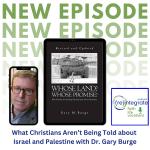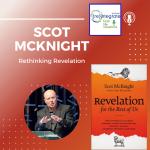
Poverty is not a theme I take up frequently in this blog, but it is one that is important to our societies in general and to many individuals at a personal level.
In a previous post, I engaged the topic of Breaking the Cycle of Generational Poverty in the following manner:
While many people experience individual poverty in their lives due to the loss of a job or another tragedy, generational poverty emphasizes patterns where two or more generations continue in poverty within the family structure. Generational poverty is often characterized and reinforced by such causes as limited educational opportunities, poor health or ongoing battle with disease, and an inability to access resources such as land, finances, and information in the pursuit of a sustainable living.
Such a description helps to better understand the experience of poverty, which includes among other things a significant lack of choice. In his book Thriving in the City, T. Aaron Smith highlights this link between poverty and lack of choice.
Poverty and Lack of Choice
Smith notes, “The poor cannot simply will themselves into resources.” While this lack of resources does not guarantee that an individual will stay in poverty, it does guarantee that the poor most often face real and significant (not impossible) barriers along the way.
As I think about engaging such barriers, my personal focus is not primarily on the current political discourse or the role of government. Rather, the focus of my thinking here is on what individuals of faith, and leaders within faith communities, may do to engage such barriers inherent in the experience of poverty.
So what can persons of faith and leaders in faith communities do to help address such barriers?
A helpful place to start is following Jesus in both His heart for the poor and His desire to incarnate among the poor and disenfranchised of our world.
A Heart for the Poor
Consider Luke 4:18-19, a passage that arguably is the very mission statement of Jesus’ life, death, and resurrection:
“The Spirit of the Lord is upon me,
because he has anointed me
to proclaim good news to the poor.
He has sent me to proclaim liberty to the captives
and recovering of sight to the blind,
to set at liberty those who are oppressed,
to proclaim the year of the Lord’s favor.”
Jesus’ proclamation of good news to the poor arguably includes all of us as those who are poor in spirit (Matthew 5:3)—all of us who need Jesus to set us free from the bondage of sin. But I believe it also includes the literal poor. As I look at the way Jesus approached His earthly life, His words and approach to life demonstrated a heart for both the poor in spirit (all of us!) and the materially and physically poor. Jesus models a heart for the poor.
A Willingness to Live Among the Poor
Not only did Jesus model a heart for the poor, He also modeled a willingness to live among the poor. The very incarnation—Jesus breaking into our world to live among us—is the ultimate picture of this reality. But He also modeled this in specific ways in His seeking out the company of the disenfranchised and marginalized of society.
It is this later theme that takes up the focus of Smith’s book. Here’s the full title of this resource, Thriving in the City: A Guide for Sustainable Incarnational Ministry among the Urban Poor.
Grounding his reflections in the broader example of Jesus’ incarnation, Smith puts most of his energies into writing about practical examples of how living among the poor can help play a role in reducing some of the key barriers discussed above.
Regardless of where you choice to live, the book provides a helpful challenge to see and respond to God’s incarnational heart for the poor. Moving beyond important macro conversations of how multiple sectors can work together to provide economic answers to the challenges of poverty, resources like Smith’s book remind us that we each can choose small steps in helping to engage the needs of the poor through practical and sustainable steps.











